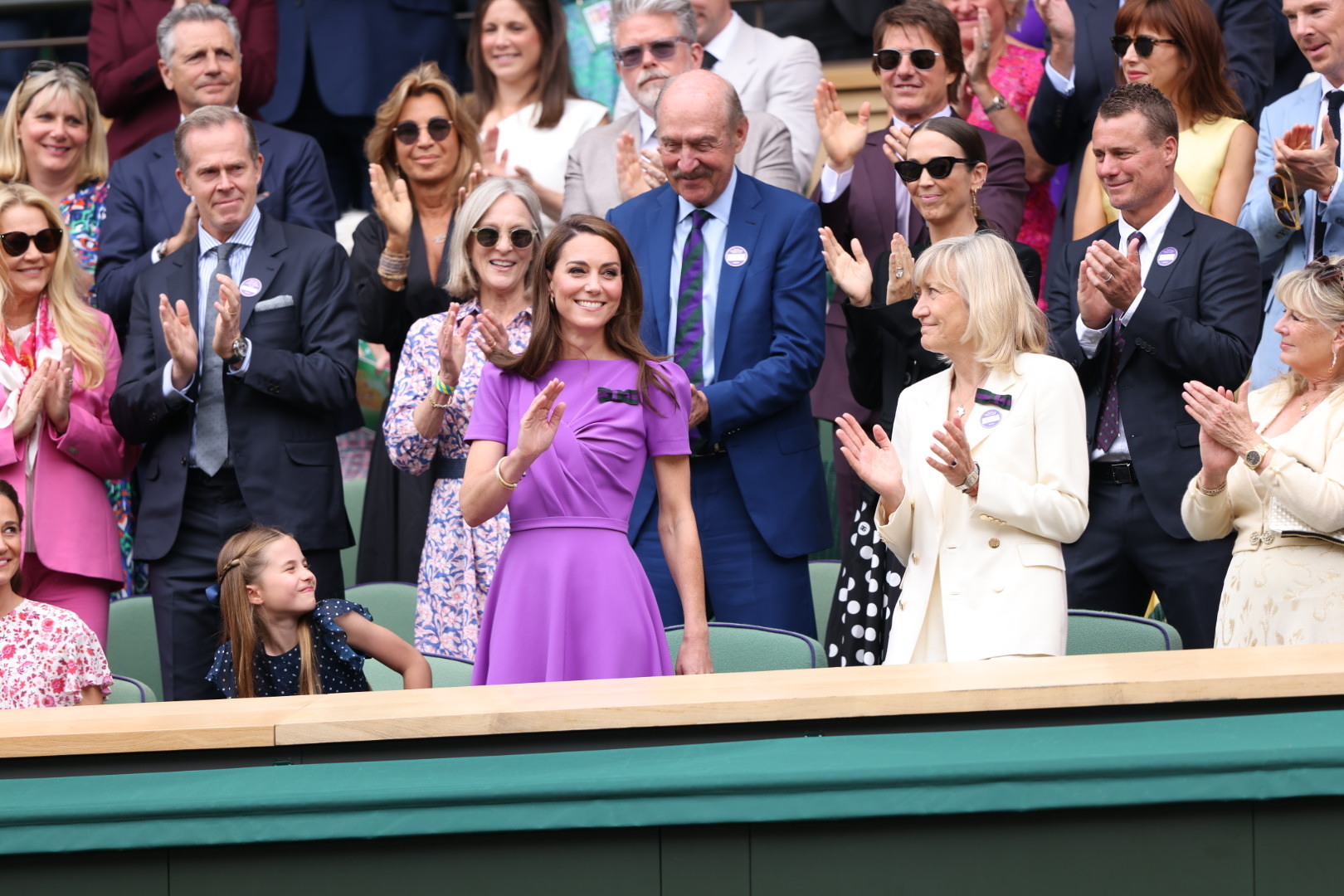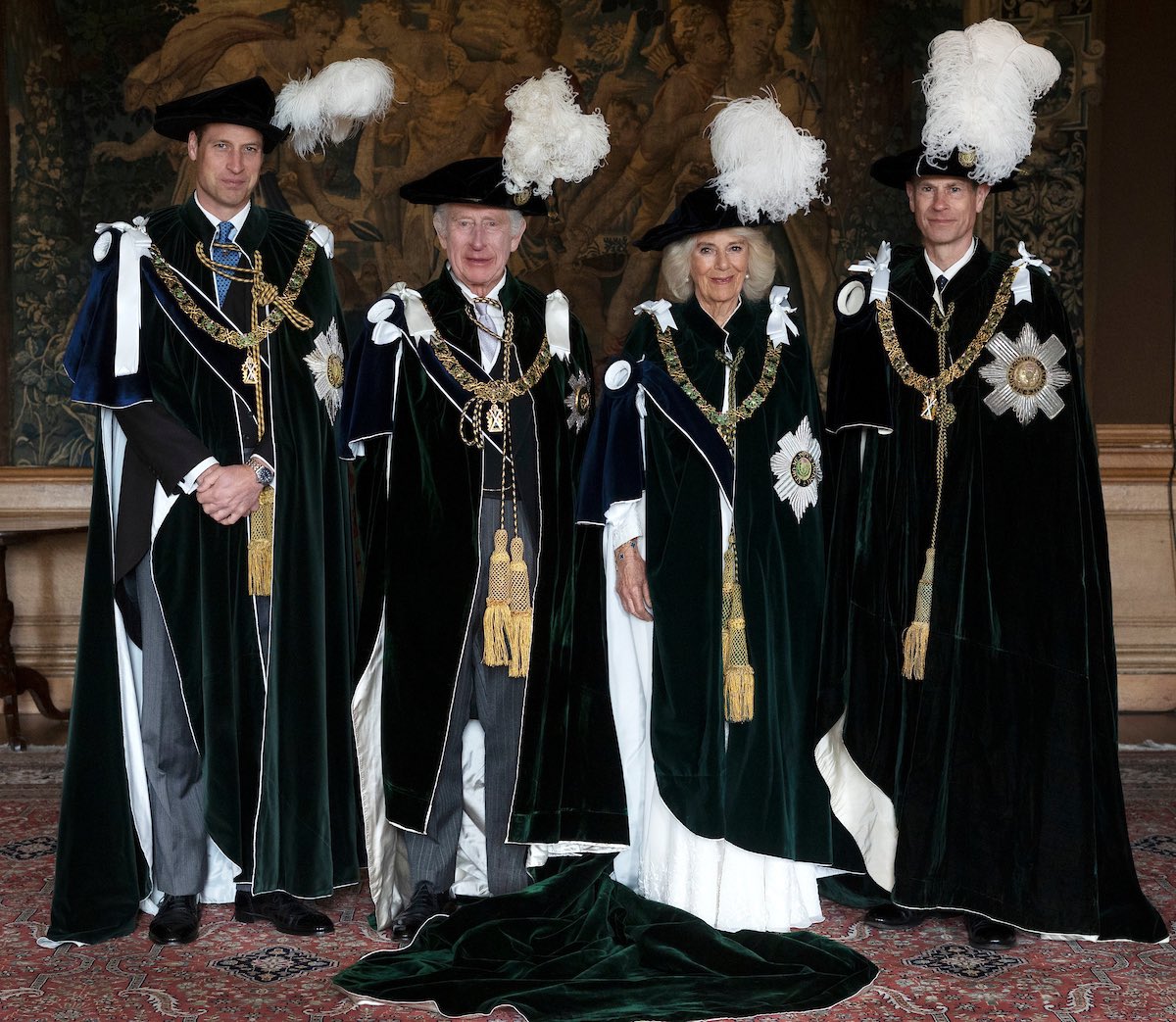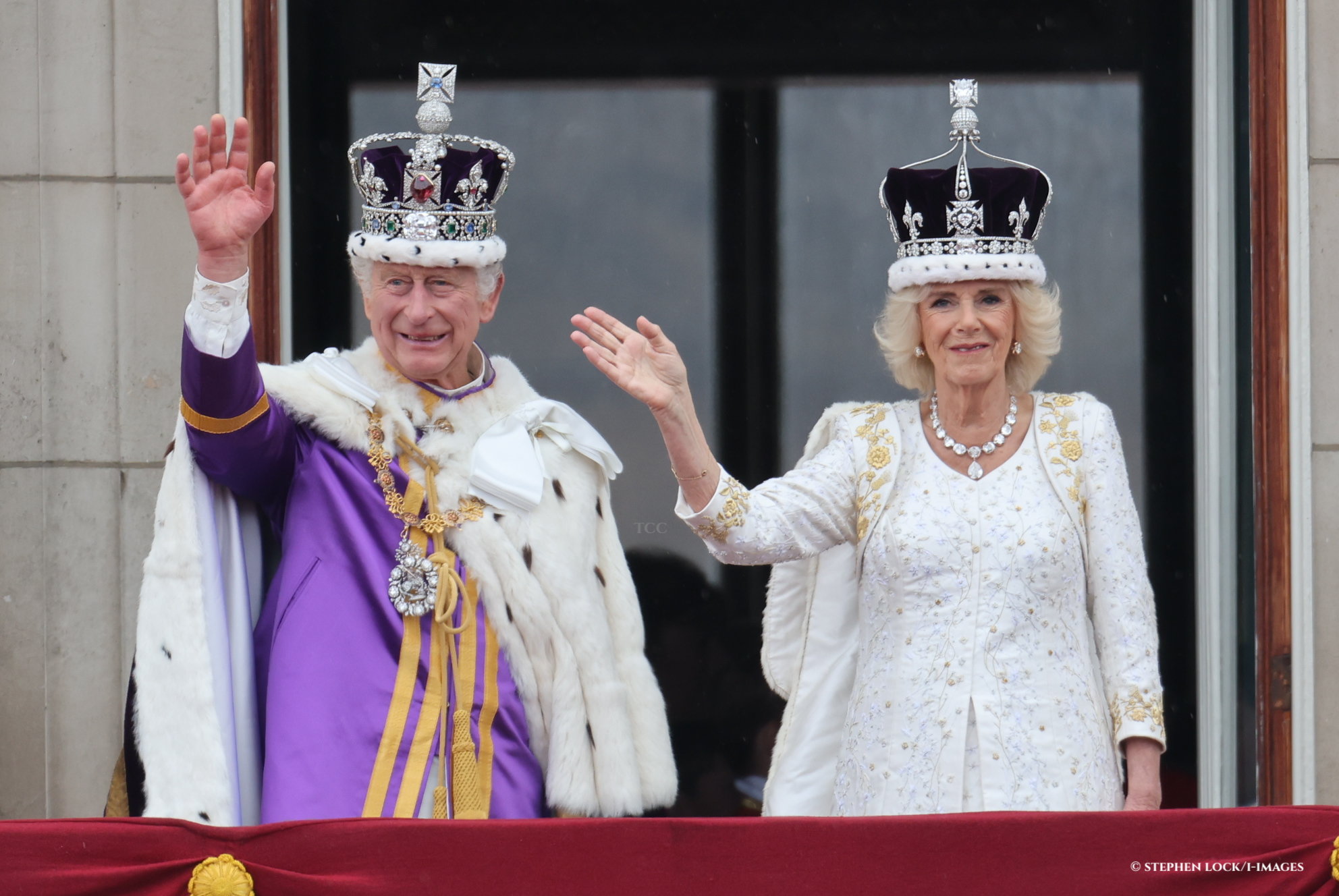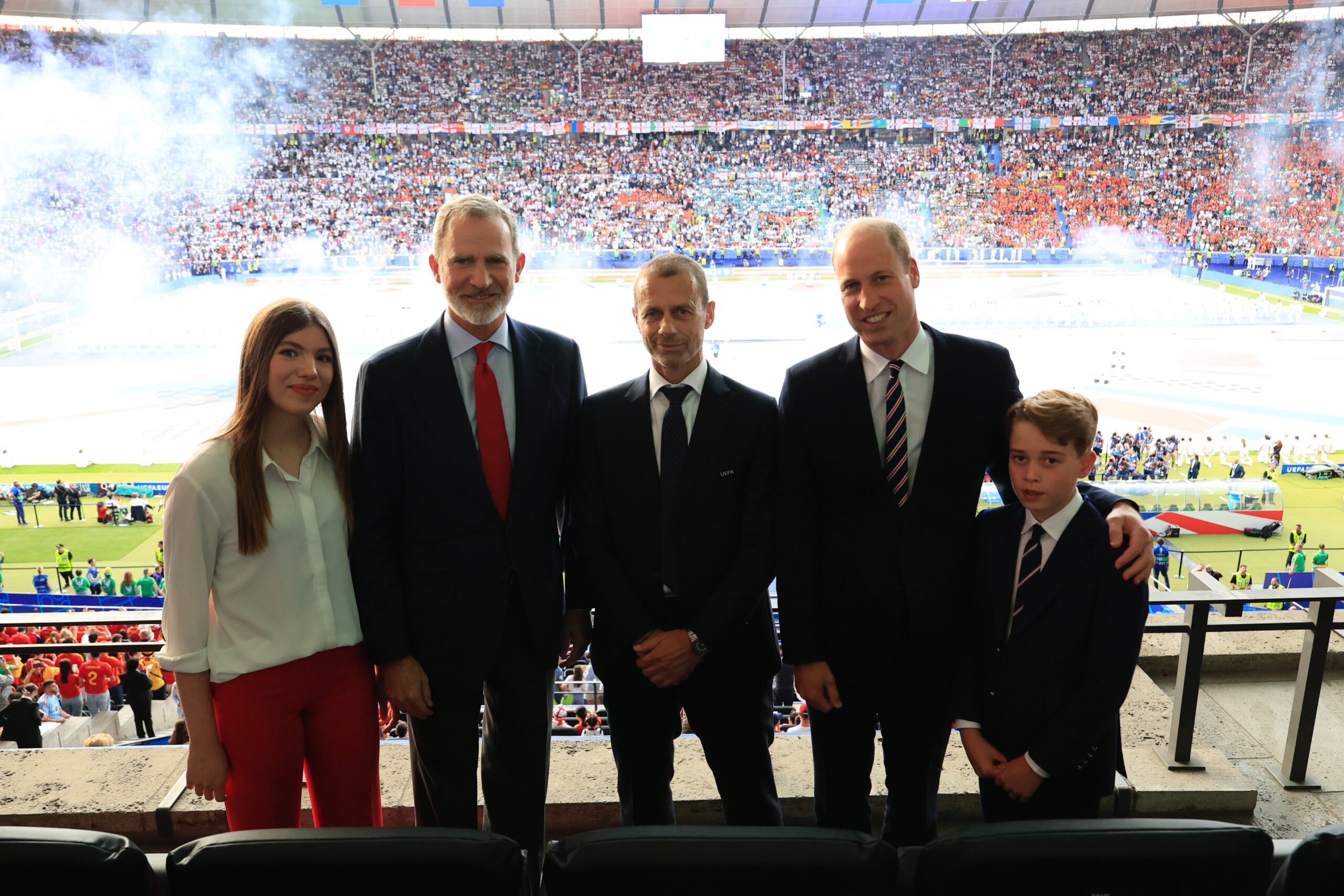What a treat for The Crown Chronicles to be invited to a preview of the Buckingham Palace state rooms before the doors open to the public today! This year’s exhibition is ‘Prince and Patron’, marking Prince Charles’ 70th birthday this year with a selection of his chosen pieces from the Royal Collection and his personal one.
After ticketing and security, the tour begins with a small walk to the inner courtyard of the Palace; on the way you are met with a bust sculpture of The Duke of Edinburgh, made in 2017. We couldn’t help but think he was keeping an eye on all the visitors…

The bust of the Duke of Edinburgh at Buckingham Palace. (Ilana Cohen)
There is a terrace platform for visiting to view the courtyard in its entirety, including where carriages and state cars arrive before and after events. The courtyard was imposing yet mystical and grand.

The inner courtyard of Buckingham Palace. (Ilana Cohen)
The tour then takes guests to the state rooms via The Grand Staircase. This was one of my favourite aspects of the tour. The staircase banister is gold with the most intricate detail, the high ceiling has the most magnificent patterns and the portraits stand proud. The staircase is a sign that this is no average stately home tour – you really are in the presence of royalty. It is, in fact, the most valuable piece in the Royal Collection..
Portraits for the staircase were chosen by Queen Victoria of those she was close to and admired, including her mother Victoria, Duchess of Kent by Sir George Hayter, her father Edward, Duke of Kent by George Dawe and her uncle, Leopold I, King of the Belgians by William Corden.
At the top of The Grand Staircase is the Green Drawing Room, filled with a number of Sévres Porcelain items. Adjoined to this is the Throne Room, where Queen Elizabeth II and Prince Philip’s coronation chairs; The Queen’s is embroidered with the ciphers ‘EIIR’, Prince Philip’s with ‘P’ enclosed by the garter from the Order of the Garter. The ceiling also has a large gold design of the Order of the Garter symbol.
Through to the beautiful Picture Gallery, where many well-known paintings from the Royal Collection are on display. My favourites were Capriccio View of the Molo and the Palazzo Ducale by Canaletto (1744) and Harbour Scene at Sunset by Claude Lorrain.
The East Gallery is a royalist’s dream, where some of the most famous paintings in British royal history are hung. The Coronation of Queen Victoria in Westminster Abbey by Sir George Hayter dominates the room with its beauty; The Royal Family in 1846 by Franz Xavier Winterhalter is the most well-known piece for any royal historian. In the middle of the room stands the magnificent Floor Standing Clock by Pierre-Louis Delacroix, gently reminding visitors that this is not a museum, this is Buckingham Palace.
The Palace’s Ballroom is the epitome of royalty. This room is where investitures and state banquets are held – trust us, this room is definition befitting of such occasions. The Duke and Duchess of Cambridge’s wedding reception was also held here! Imposing over the room is the organ, adapted specifically for the Ballroom by Henry Cephas Lincoln.

The set up for a State Banquet in the Ballroom, from the 2015 summer opening. (Royal Collection Trust/Her Majesty Queen Elizabeth II, 2015)
Overlooking the Palace gardens is the State Dining Room, the Blue Drawing Room, the Music Room and the White Drawing Room, where The Queen regularly hosts guests. The Blue Drawing Room holds portraits of The Queen’s beloved grandparents, George V and Queen Mary. The White Drawing Room was our favourite, with gold and white detail and huge chandeliers.
Down the Ministers’ Landing and Staircase is the Marble Hall, holding a number of well-known sculptures. Many of these pieces were held by Queen Victoria and Prince Albert at Osborn House on the Isle of Wight. After Victoria’s death, her son Edward VII brought the pieces over to be housed in Buckingham Palace.
Through the beautiful Bow Room, the tour ends at the entrance to the Palace gardens. Held here are the famous Buckingham Palace Garden Parties. Nothing prepares you for the beauty and size of the gardens, but an even better treat is being able to look up to the Palace and take in the architecture of one of the world’s most famous buildings.

Buckingham Palace, as soon from the gardens.

Buckingham Palace Gardens
Prince & Patron
A special display by The Prince of Wales has been curated for this summer’s opening to mark His Royal Highness’s 70th birthday year in the Palace’s Ball Supper Room. The exhibition, ‘Prince & Patron’, presents a rich display of paintings, decorative arts, works on paper, furniture and textiles from the Royal Collection and the work of artists supported by three of The Prince’s charities – The Royal Drawing School, The Prince’s Foundation School of Traditional Arts and Turquoise Mountain.

The Prince and patron exhibition at buckingham palace (RCT)
In 2000, The Prince of Wales founded The Royal Drawing School, an independent educational charity raising the standard and profile of observational drawing through teaching and practice. Works chosen by His Royal Highness include the ink drawing ‘The Where That Was’ by Olivia Kemp, who reimagines Guernsey following time spent on the island as an Artist in Residence, and the watercolour ‘The Church in the Mountains’ by Sophie Charalambous, inspired by the church of Panagia Phorbiotissa in the Troodos Mountains, Cyprus. The exhibiting artists are graduates of The Royal Drawing School’s prestigious postgraduate programme, The Drawing Year.
Founded by Prince Charles in 2004, The Prince’s Foundation School of Traditional Arts encourages the practice of traditional arts, including textiles, ceramics, calligraphy, stained glass and mosaics, and is now active in over 20 countries across five continents. Patterned tiles by former student Ghulam Hyder Daudpota were inspired by motifs of Kashikari art, a dying craft that can be traced back to the 12th-century shrine of Shah Yusuf Gardezi, Multan, in present-day Pakistan. The tiles are handmade using natural red clay and painted with traditional colours and glazes.

A member of Royal Collection Trust staff puts the finishing touches to an installation of ceramic bowls in the special exhibition ‘Prince & Patron’ at the Summer Opening of the State Rooms at Buckingham Palace, 21 July – 30 September 2018. Royal Collection Trust (c) Her Majesty Queen Elizabeth II 2018
Natasha Mann’s paintings based on Moroccan designs highlight the School’s focus on geometry as a creative practice. A former student, Mann is influenced by the Zouaq techique, used to decorate ceilings, doors, furniture and wooden objects in Morocco. The highly complex patterns are initially drawn with a compass and ruler before being transferred to wood. The paintings are created using hand-ground natural pigments mixed with egg tempera and finished in 24-carat gold leaf.

Hannah Rose Thomas (b. 1991), Portraits of Yezidi women who escaped ISIS captivity, 2017; tempera and gold on panel. Royal Collection Trust (c)
Founded in 2006, Turquoise Mountain creates jobs and skills while reviving traditional crafts in historic communities. The organisation has established sustainable urban regeneration projects that support the revival of creative industries in Afghanistan, Myanmar and the Middle East. The geodesic dome, carved from walnut wood by Naseer Yasna (Mansouri), makes use of jali, the technique of creating geometric lattice designs from hundreds of individual pieces of wood. The dome is an example of how artisans are repurposing traditional forms and techniques to create contemporary objects.
Two oil sketches of The Prince and The Duchess of Cornwall by Eileen Hogan from His Royal Highness’s personal collection are seen together publicly for the first time. Commissioned by The Prince in 2016 and 2017 respectively, they both depict Their Royal Highnesses seated at desks in Birkhall, their private residence in Scotland.

Portraits of The Duchess of Cornwall by Eileen Hogan (2017) and Queen Elizabeth The Queen Mother by Michael Noakes (1973)

Michael Noakes(1933 – 2018), Queen Elizabeth The Queen Mother , 1973; oil on board. (c) Anya and Jonathan Noakes
Also included in the display are separate preparatory oil canvas sketches of Prince William and Prince Harry by Nicky Phillipps when she was preparing for their joint portrait in 2009.

Nicky Philipps (b. 1964) Preparatory sketch of Prince William 2009; oil on canvas. (c) Nicky Philipps

Nicky Philipps (b. 1964) Preparatory sketch of Prince Harry 2009; oil on canvas (c) Nicky Philipps
Embed from Getty Imageswindow.gie=window.gie||function(c){(gie.q=gie.q||[]).push(c)};gie(function(){gie.widgets.load({id:’0D6eEU8tT1h9HlXZFVhoiw’,sig:’YpUjLhknWPc_rBu5K0hHwFXgCI2pZ8S0vFEuJkOoL7A=’,w:’594px’,h:’426px’,items:’167334631′,caption: true ,tld:’co.uk’,is360: false })});
Throughout the exhibition are a number of photographs of the Prince’s family, including a never-seen-before photo of Charles with his son William and grandson George as a baby. In front of the photograph were pieces of the Chinese tea ware with scroll by Yungfeng Cong, made from porcelain ink on rice paper.

Never before seen photograph of The Prince of Wales, The Duke of Cambridge and Prince George. (Ilana Cohen)

A photograph from Prince George of Cambridge’s christening in October 2013.
To celebrate the 70th anniversary of the Battle of Britain in 2010, The Prince of Wales commissioned a series of drawing of veterans by alumni and faculty members of The Royal Drawing School. Four drawings from The Last of the Few series are included in the display, including Stuart Pearson Wright’s portrait of Flight Lieutenant WLB Walker AE, who was then the oldest surviving pilot from the battle.

A Study of Queen Victoria and Prince Albert by Sir Edwin Landseer (1841)

Sir Edwin Landseer, A Study of Queen Victoria and Prince Albert 1841; oil on canvas. Royal Collection Trust (c) Her Majesty Queen Elizabeth II 2018
Among the works selected by His Royal Highness from the Royal Collection is Johan Joseph Zoffany’s painting The Tribuna of the Uffizi, 1772-77, showing connoisseurs and Grand Tourists admiring the Grand Duke of Tuscany’s collection in the Uffizi, Florence. The artist was commissioned to paint the work by Queen Charlotte, consort of George III.
Another magnificent piece is the cloak that once belonged to Napoleon. Contemporary biographies describe the Emperoras wearing a cloak of this nature during his campaigns in Egypt in the late 1790s. The design is inspired by the North African burnous, traditionally worn by Berbers, although this cloak was probably made in France. It was seized from Napoleon’s baggage train at the field of Waterloo, following the defeat of the Emperor, and is made of red felt, silver thread braid borders and tinsel tassels.

Prince charles chose Napoleon’s cloak to go on display (rct)
In June 2018, Prince Charles visited the final degree show of The Prince’s Foundation School of Traditional Arts and selected Hannah Rose Thomas’s three portraits of Yezidi women for the exhibition. The paintings, in tempera with gold leaf on panel, are of women who escaped ISIS captivity and reflect His Royal Highness’s support for the Yezidi community.
At the centre of the room is a striking 2.3-metre-high cedar wood pavilion created by classical carver Naseer Yasna (Mansouri) and the woodwork team at Turquoise Mountain. The pavilion’s intricate carvings draw on the rich heritage of Afghan design and demonstrate how the charity is reviving traditional skills in historic communities.
In a message recorded for visitors, Charles says, “These charities have achieved more than I could ever have hoped, often in ways that I would never have expected. I am delighted that they now have an opportunity to show their work in Buckingham Palace and together with some of my favourites from the Royal Collection.”
Please visit our article “Visiting Buckingham Palace: Tips” for more information about the tour and planning your day.






2 comments
Awesome
Beautiful.